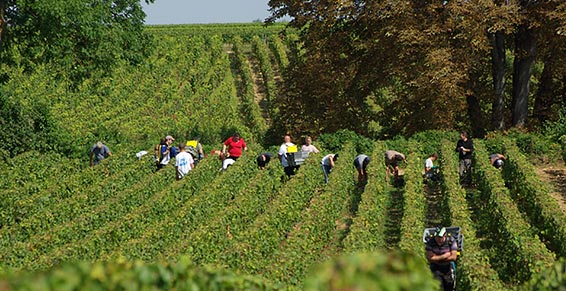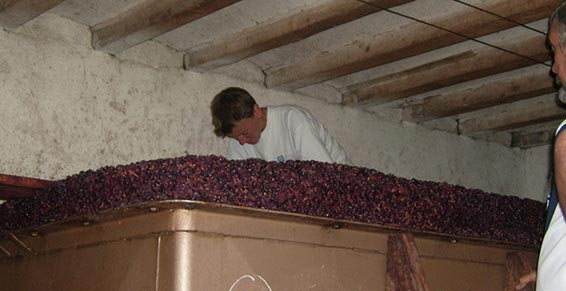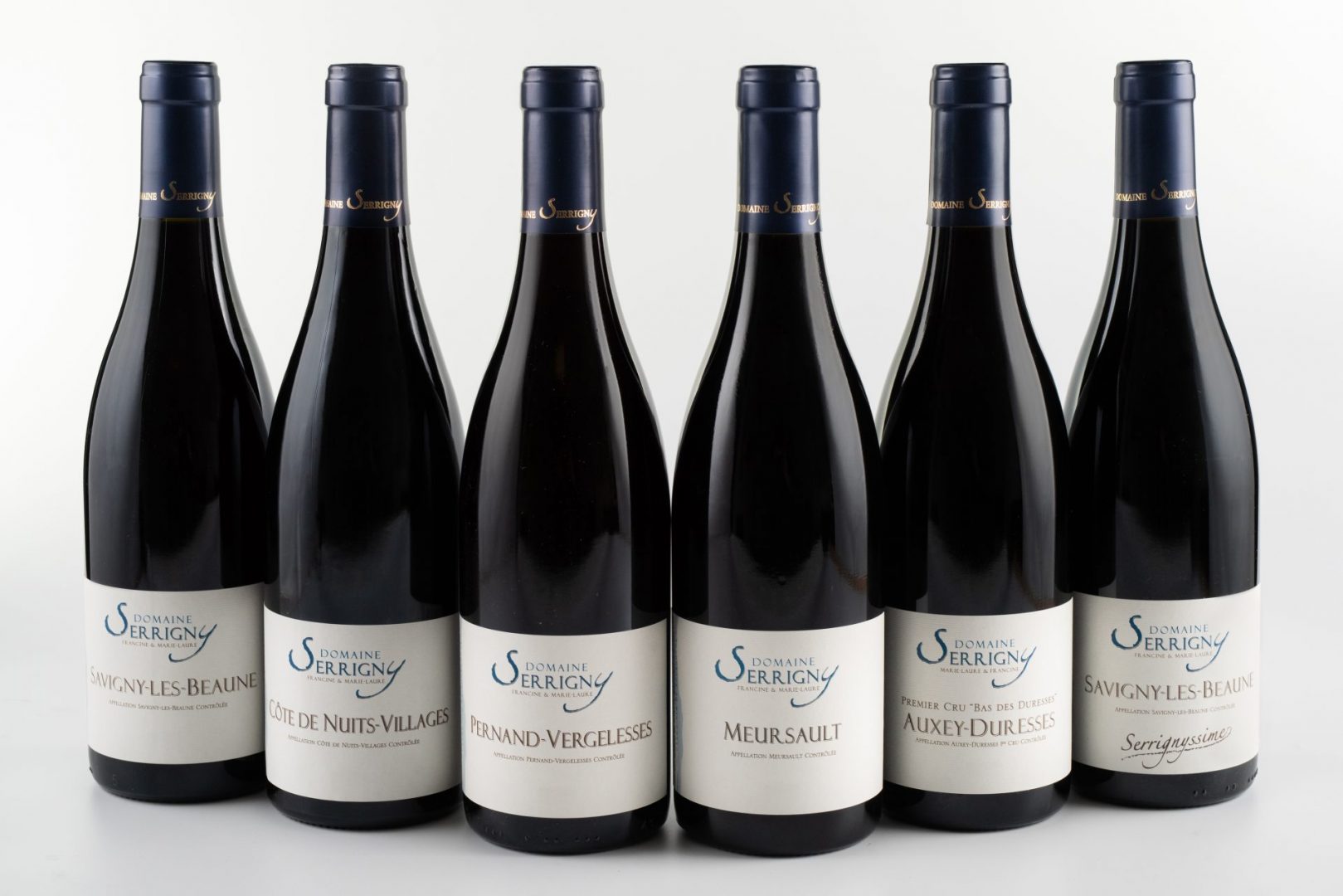The harvest is a very important moment in our activity and will reward all the efforts we have made in the vineyard.
This is why we are taking all the necessary steps to ensure their success.
The harvest is carried out manually with a team of no less than 25 people and can be spread over three weeks depending on the vintage.
The Harvest

Indeed, we only harvest ripe grapes, and it often happens that we interrupt all cutting for 2 or 3 days to allow the plots to finish ripening peacefully.
We have an experienced team of cutters in the vineyard who come back from one year to the next and we ask them to go quickly to harvest the grapes at the right maturity.

In order to preserve the quality of the harvested bunches as much as possible, we work with small 10 kg openwork crates which avoid compacting and handling between the vine and the vatting house.
The crates are then transported by lorry to the estate, where the grapes undergo a strict sorting (it is not unusual to remove 10 to 20% of the grapes) on a table provided for this purpose, and around which no less than 6 people work.
It is from this phase that the vinifications begin.

Winemaking
For our white wines
At the exit of the sorting table, the grapes are directly conveyed by a belt to the press.
Pressing can now begin.
The grape juice is collected in a tank and then put into barrels.
We always make sure that the woodiness serves the qualities of our wines. This is why, whatever the appellation, we work with barrels of 1 to 4 wines.
For our red wines
At the exit of the sorting table, the grapes are 100% destemmed, and only the berries are conveyed on a belt to stainless steel vats for vinification.
It is from this moment that alcoholic fermentation begins (transformation of sugar into alcohol).
The vatting time varies from one vintage to another, with an average of around 25 days.
Each day, we carry out a punching of the cap and pumping over in order to break the crust that is created on the surface of each vat and to homogenise each cuvée. It is during this period that the white juice of the Pinot Noir will take on the beautiful colours that we know.
When the alcoholic fermentation is over, each cuvée is taken to the press; the wine is then put into barrels of 1 to 4 wines.
Maturing can then begin.



Breeding
Throughout the maturing period of our wines, we concentrate on intervening very discreetly in order to give free expression to the terroirs we love.
For our white wines :
The period will be spread over 12 to 14 months during which the malolactic fermentation will generally take place at the end of January or during February.
Resting on fine lees, we practice stirring of the lees in our white wines, which consists in putting the lees back into suspension in the wine to obtain silkier and more generous wines.
We regularly taste our wines during this period in order to determine the right moment for bottling.


For our red wines
Our red wines are matured over 14 to 16 months with very little intervention on our part. We prefer to let them rest on their lees rather than rack them during the maturing process.
We let the malolactic fermentation take place randomly, and it is not rare to find some barrels at least in June that have not yet started it !
Bottling is carried out after having assembled the barrels of each appellation in vats to obtain a homogeneous and regular whole.
You just have to wait a few months, a few years and start tasting.

